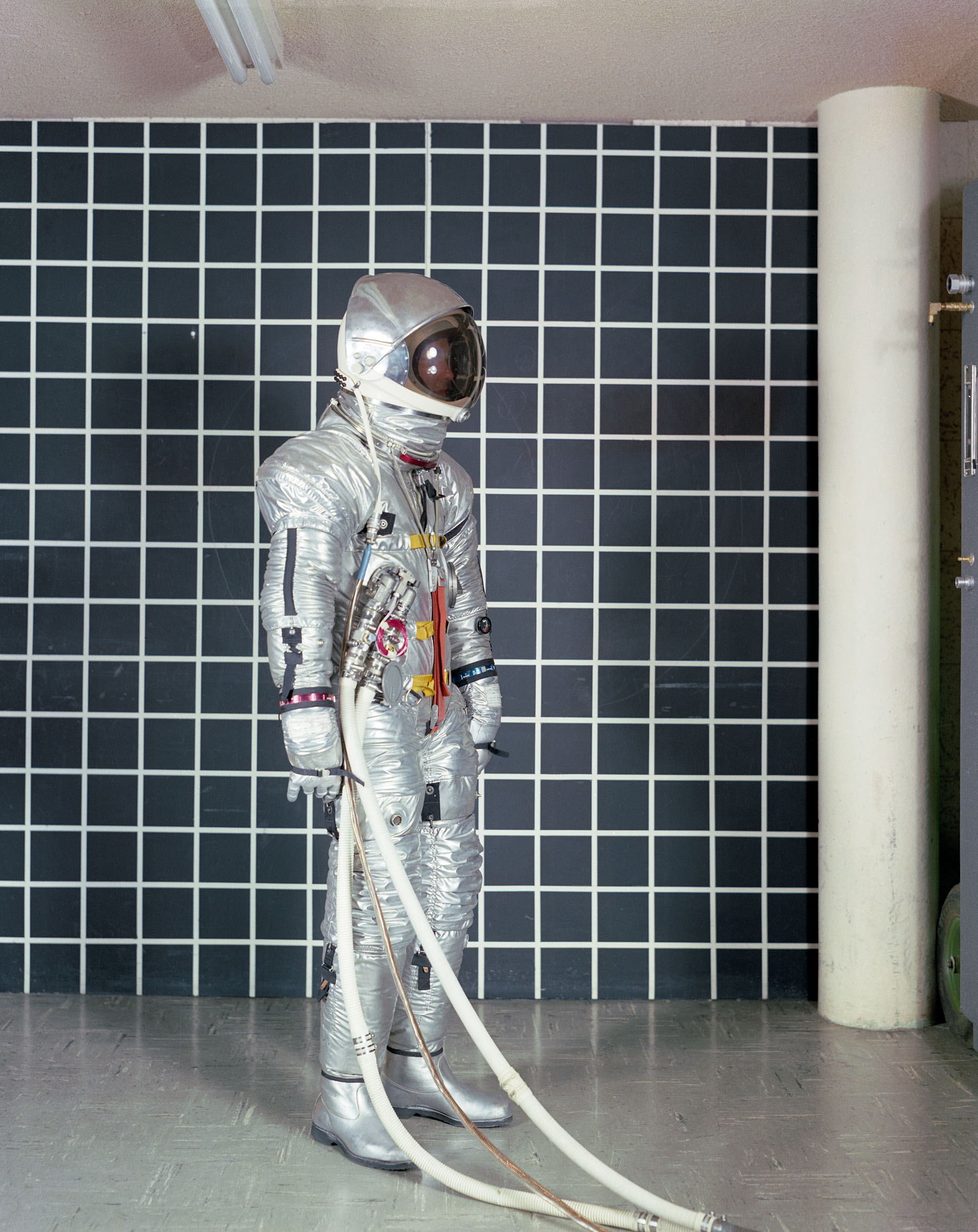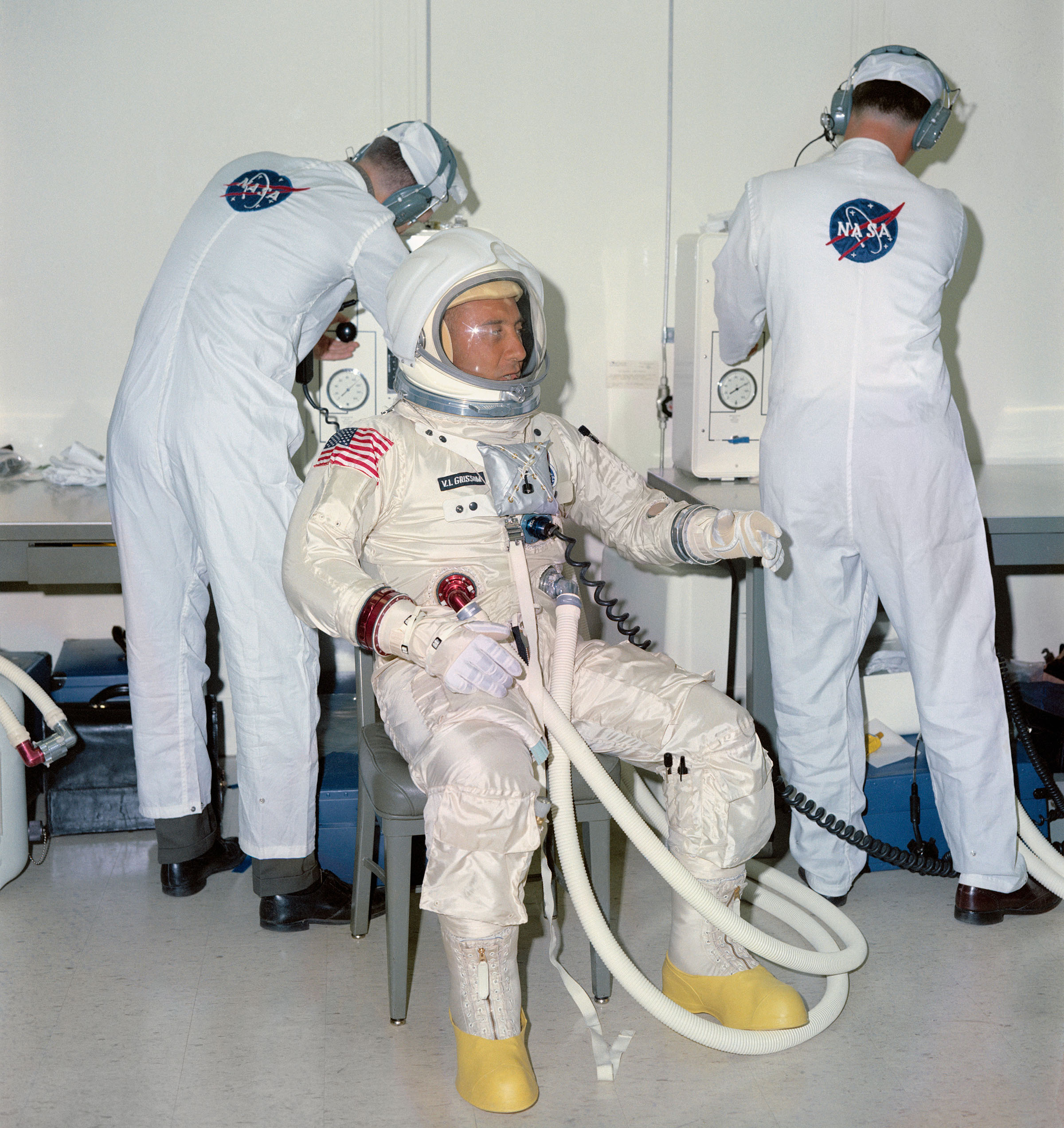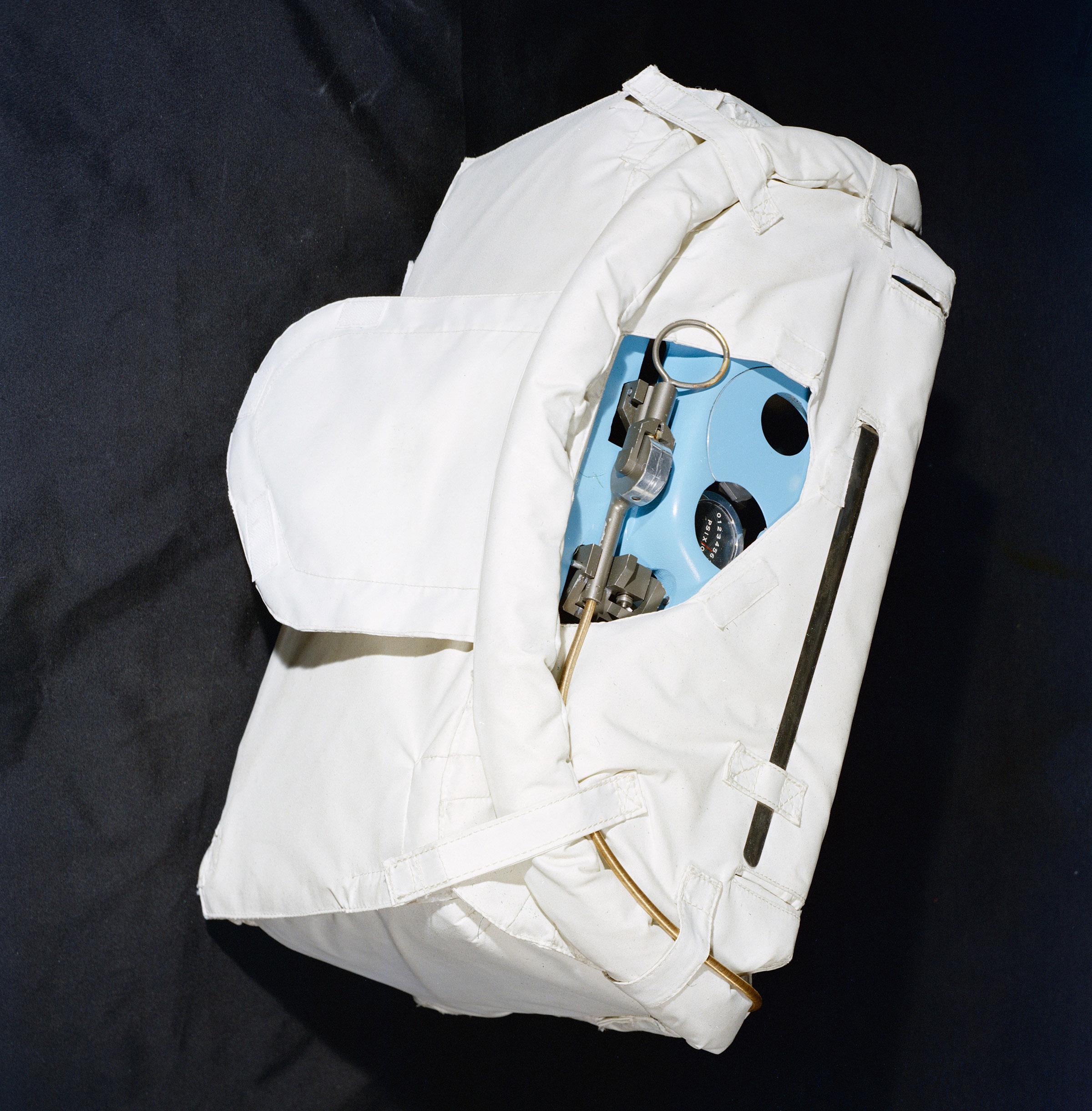
Suit, Apollo Prototype Space Suit. Image Credit: NASA
A multi-part series on the history of NASA's Apollo missions.
Project Apollo required astronauts to walk on the Moon, which established a wide range of requirements for space suits. The garments had to meet requirements for comfort, flexibility and protection while sustaining the astronauts in a harsh airless environment.
The entire ensemble, or “Extravehicular Mobility Unit” (EMU), included the pressure suit, life support unit, and accessory items. The EMU weighed 183 pounds on Earth; in the one-sixth gravity environment of the Moon, it weighed just 30.5 pounds.

Suit, Apollo Prototype Space Suit. Image Credit: NASA
From the skin out, the basic pressure garment comprised a Nomex comfort layer, a neoprene-coated nylon pressure bladder and a nylon restraint layer. For lunar surface use, a multi-layer “Integrated Thermal Micrometeoroid Garment” (ITMG) covered the pressure garment to provide thermal insulation and protection from micrometeoroids.
The ITMG comprised two layers of neoprene-coated nylon, seven layers of a Beta fabric/aluminized Kapton laminate, and a Beta cloth outer cover. Introduced to meet strict flammability standards after the Apollo 1 fire, Beta cloth was a Teflon coated glass fiber fabric. (Mylar and Kapton are plastics that can be produced in extremely thin films. A molecule-thick layer of aluminum deposited on one side of the film makes it a good thermal insulator, especially when assembled in blankets of multiple layers.)
The astronaut who remained in the Command Module wore an intravehicular suit that did not have the ITMG. Instead, the intravehicular suit had a coverlayer that comprised Nomex and two layers of Beta fabric. Intravehicular suits weighed 35.6 pounds.

NASA suit technicians assist Astronaut Virgil I. Grissom during suiting operations prior to tests at Kennedy Space Center KSC. Image Credit: NASA
The Apollo space suit incorporated convolute or constant volume joints in the shoulders, elbows, wrists, knees, hips and ankles. When a space suit is pressurized, bending a limb like an arm constricts the garment and decreases the volume inside the suit. This increases the pressure inside the suit, making it hard to move. A constant volume joint is constructed like an accordion bellows. When a joint is flexed, the inside portion of the flex contracts while the outer portion of the joint expands, keeping internal volume (and therefore, pressure) constant. Pressure suits with constant volume joints are easier to move in than ones that do not have such a design feature. Restraint cables or cords with restraint attachment points further enhanced mobility by preventing the convolute joints from ballooning.
Each astronaut had a pressure helmet with his suit. The Apollo pressure helmets were single-piece molded clear polycarbonate plastic that attached to the suits with a neck ring. The helmets did not have a movable visor like the ones on earlier suits. For communications, the crew wore lightweight communications carriers, or “Snoopy caps,” with redundant earphones and microphones underneath the helmets.
Space suit designers created a backpack “Portable Life Support System,” (PLSS) so the astronauts could freely explore the lunar surface. The PLSS contained the primary oxygen tank, lithium hydroxide canister to absorb carbon dioxide, communications and telemetry equipment, power supply, and water for the liquid cooling garment. A fabric thermal insulation jacket covered the PLSS.

Studio views of the Apollo Portable Life Support System (PLSS), the Oxygen Purge System and the Extravehicular (EVA) Visor/Helmet assembly. Image Credit: NASA
A separate unit, called the Oxygen Purge System (OPS) was on top of the PLSS. The OPS contained a 30-minute emergency oxygen supply. The oxygen was contained in two two-pound bottles pressurized to 5,880 pounds per square inch. The OPS also had the VHF antenna for the PLSS.
A chest-mounted unit contained the electrical controls for the PLSS, oxygen quantity indicator, and warning devices. The warning devices indicated such malfunctions as low water pressure, high or low oxygen flow, and low pressure. If any of these indicators came on, the astronaut could switch over to the OPS and abort the EVA.
When working on the moon’s surface, Apollo astronauts wore a liquid cooling garment, or LCG, underneath their space suit. The LCG was made from nylon-spandex fabric with a network of PVC tygon tubing. Cool water from the PLSS backpack circulated through the tubing to keep the astronauts from overheating in their heavily insulated suits.
To walk on the Moon, astronauts wore special boots over the space suit. These boots had silicone rubber soles and toes. Chromel-R, a fabric made from woven stainless steel thread, provided abrasion protection around the ankles. Layers of aluminized Kapton and Mylar plastic films between the inner lining and outer fabric insulated their feet from extreme heat or cold. The boots were not pressurized.
All three astronauts on an Apollo crew had intravehicular gloves. The gloves were made from a pressure bladder molded from a hand cast of each astronaut. Built-in relief projections over the knuckles improved dexterity and flexibility of the gloves when pressurized. The astronauts who worked on the Moon’s surface wore special lunar gloves, with an outer layer of Chromel-R, silicon rubber fingertips, and insulated cuffs.
An insulated Lunar Extravehicular Visor Assembly (LEVA) was worn over the pressure helmet. Made from polycarbonate plastic with a fabric cover, the LEVA provided impact, micrometeoroid, thermal and ultraviolet protection for the moon walking astronaut. It had had two pull-down visors, one of which was gold coated.
International Latex Corporation in Dover, DE, received the contract for the Apollo space suit. (International Latex Corporation is now known as ILC Dover.) Hamilton Standard was contractor for the PLSS.
Next installment of the “Season of Apollo” will feature the Apollo 10 mission, the final dress rehearsal for the landing on the Moon.